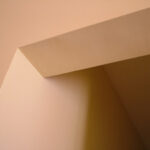A number of issues can cause the floors in a house to sag or slope. Damage to the plates or joists of the house will usually result in sloping floors. A settling foundation will do the same thing. Water damage, insect damage or storm damage may also lead to sloping floors. Repairing a sloping floor is similar regardless of the specific cause. Fixing the damage or eliminating the settling can be another matter.
You need to go into the basement or crawl space to determine where the problem is and how to attack it.
More sloping floors are over crawl spaces than basements. Before you can start to level the floor, you may need to replace some of the support material of the house. Often, floor joists need to be replaced as part of the process. You may discover you need to remove and replace damaged wood in the plates of the house between the walls and the foundation. Both of these repairs can be done as you are working to fix the sloping floor. To replace a joist, you will want to lift the adjacent joist about 1/2 inch to release the pressure so the bad joist can be removed and replaced. Bottom wall plates will be repaired after the lifting has been done to the floor.
Get at least two bottle jacks that are able to lift at least 10 tons each.
You will also need to get or pour a concrete slab or get a piece of sheet steel to use as a support for the bracing that will hold the floor in place once it has been raised. You should also have four-inch steel tubing or a 6×6 piece of wood to use as the upright to brace the floor into place. Some additional one-inch thick lumber should be used under the jacks so they will not sink into the dirt in the crawl space.
Attach a 2×10 across all of the floor joists that you will need to raise to level the floor.
You can screw the board to the joist to hold it in place. If you are going to have to raise more than an eight- or 10-foot span, you may want to do this as two separate tasks or fasten two 2x10s together to get the four-inch thickness to support the extra weight. You can turn the 2×10 on edge if you choose to get the added stiffness of the 10-inch width.
Start the job by placing a piece of the one-inch lumber on the earth under the house.
Position this wood at a point next to where you want the permanent support to rest. This should be between one and two feet from the end of the support beam that you have attached across the joists. Place a jack on the wood and cut a piece of 6×6 wood long enough to reach from the top of the jack to within about an inch of the bracing attached to the floor joists. Nail or screw a piece of one-inch-thick wood onto the bottom of this 6×6 wood. Hold the wood on top of the jack and raise the jack until the prop is firm enough to be released. Make sure it is perpendicular to the floor joists it will be raising. Repeat this process for the second jack about six feet away from the first jack.
When the jacks are in place, start to raise one of the jacks until it has lifted the floor about 1/4 of an inch.
Move over to the other jack and lift it the same amount. Work back and forth from jack to jack until you have raised the floor slightly above the desired level to remove the slope. This should have the pressure off of the wall plate so it can be repaired.
Place or pour the concrete slabs where you will be placing the permanent supports for the floor.
If using concrete is a problem, you can cut pieces of sheet steel in about 18-inch squares to set the upright supports on. Cut the steel pipe or 6×6 to the correct length to hold the house at the desired level. Put both of the supports in place. You may need to do this one at a time if you are working alone. Start to lower the first jack enough to let the support beam rest gently on top of the upright support. Move to the second jack and repeat the process.
Once the two uprights are held in place, finish releasing the jacks to let the weight of the house rest on the supports.
For very badly sloped floors, this process may need to be repeated to hold up other sections of the house. If the expanse is long, you may want to use four or more jacks so the entire expanse can be raised at the same time. When the floor has been leveled, go into the house and make sure all vent pipes are still properly positioned to be safe. If this job is being done in a basement, use sheet steel under the upright support to spread the weight to a larger area on the concrete floor.



